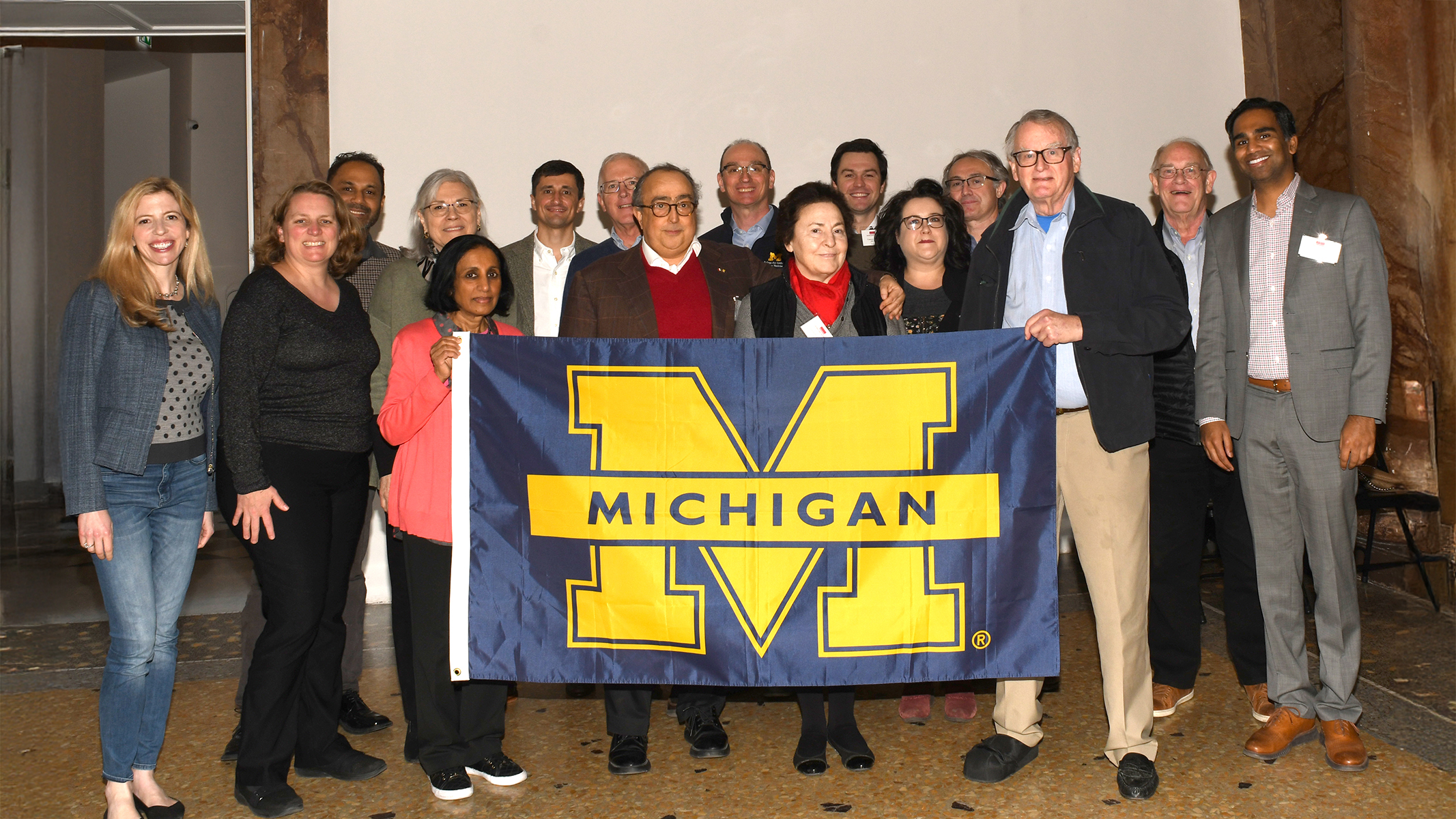
3 minute read
The Monaciano Consortium Marks 10 Years
In January 2024, three dozen physicians and scientists from around the world, including ten representatives from Kellogg, joined forces in Italy to accelerate the progress of research in blinding inherited retinal dystrophies (IRDs).
The symposium was not the first, but the third convening of the Monaciano Consortium, an influential gathering designed to foster collaboration and develop shared policy and research agendas. Previous meetings were held in 2013 and 2018. “When we first gathered more than ten years ago, we could hardly believe we were being given this once-in-a-lifetime opportunity,” says Kellogg investigator Debra Thompson, Ph.D., one of the event’s organizers. “We never dreamed the meeting would be so successful that we would experience it three times.”
For hosts Celeste Pavoncello and Bruno Piperno, the symposia are the realization of a dream. Steadfast advocates for IRD patients in their home country, the couple has a longstanding connection to the University of Michigan. Bruno earned a graduate degree in business at U-M, and several of the Piperno children have also studied here.
Diagnosed with an IRD as a young man, Bruno was treated at Kellogg and has long followed research and “treatment advances here and around the world. Continually looking for opportunities to make a difference, the Pipernos did just that in 2013: opening the doors of Tenuta de Monaciano, the family villa and vineyards in the Tuscan countryside, for an international scientific meeting focused on IRDs. They hosted the group again at the same location in 2018 and moved the symposium to Rome in 2024.
Monaciano I: Siena, Italy, 2013
At the first symposium, participants discussed the characterization of disease progression, the latest therapeutic advances in gene and cell therapy and RPE and photoreceptor transplantation, and the challenges of measuring clinical outcomes. Consensus goals for advancing treatments and actions that could be taken together to achieve them were outlined in a position paper published in the February 2015 issue of the journal Investigative Ophthalmology & Visual Science.
Monaciano II: Siena, Italy, 2018
The treatment landscape changed markedly in five years. With advances like the first FDA-approved gene therapy for Leber Congenital Amaurosis, IRDs took center stage in the emerging field of precision medicine. Again, attendees identified and prioritized strategies to move the field forward, and again, their consensus opinions were published in the June 2020 issue of Translational Vision Science & Technology (TVST). Recommendations included prioritizing natural history studies to guide clinical trial design, developing and validating standardized, patient-friendly outcome measures, curbing gene therapy-associated inflammation, developing a pediatric action plan, and improving advice to patients and overall transparency, accountability and accessibility.
Monaciano III: Rome, Italy, 2024
This year, three generations of the Piperno family hosted the symposium in Rome. Recent developments have again sharpened the group’s focus, now aimed at identifying barriers limiting progress and proposing options to improve the process of developing and testing novel therapies.
“Past position papers have garnered more than 14,000 views and 3,700 downloads, and we look forward to publishing our latest consensus opinions,” Dr. Thompson says. “We’re incredibly grateful to the Piperno family for their generosity. These symposia have ignited fresh ideas and fostered enduring collaborations that are changing the future for patients and families impacted by IRDs.”












